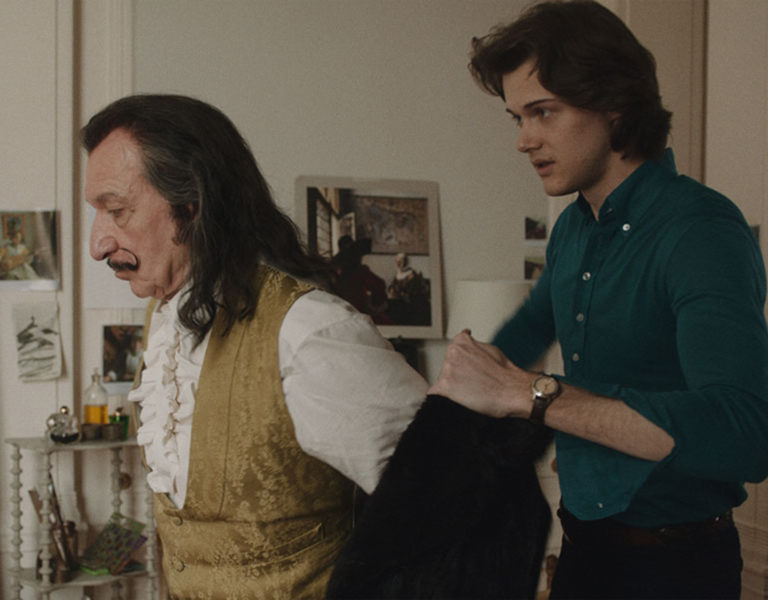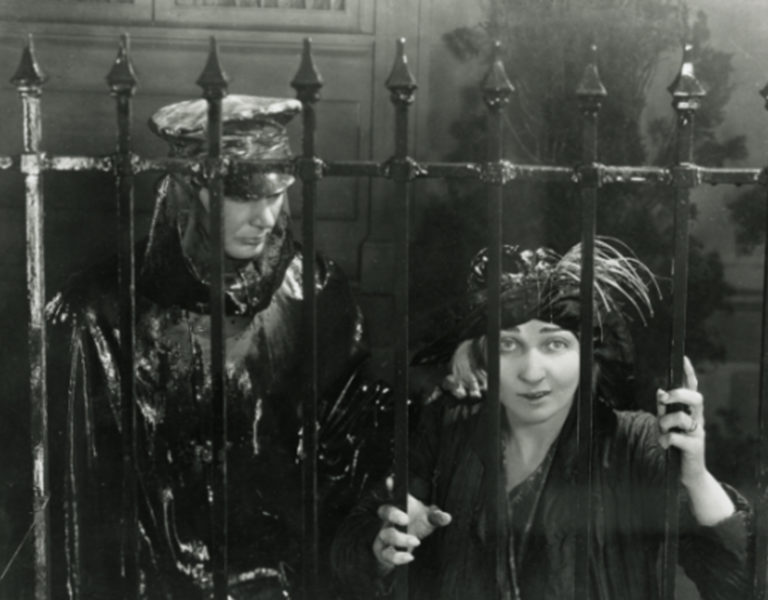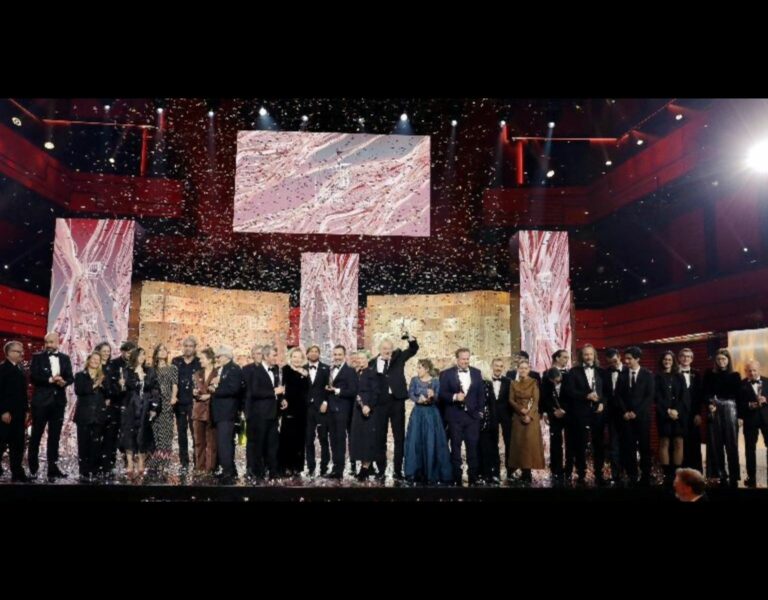Cinematographer Edward Hamilton-Stubber draws on his experiences living in Berlin when crafting the visual language for his NFTS graduate film, Tapeworm.
Trapped in a cycle of debt, years as witness and accessory to cold-blooded exploitation have hardened Worm. A final gamble for freedom allows her a chance to regain her humanity and autonomy over her fate in Tapeworm.
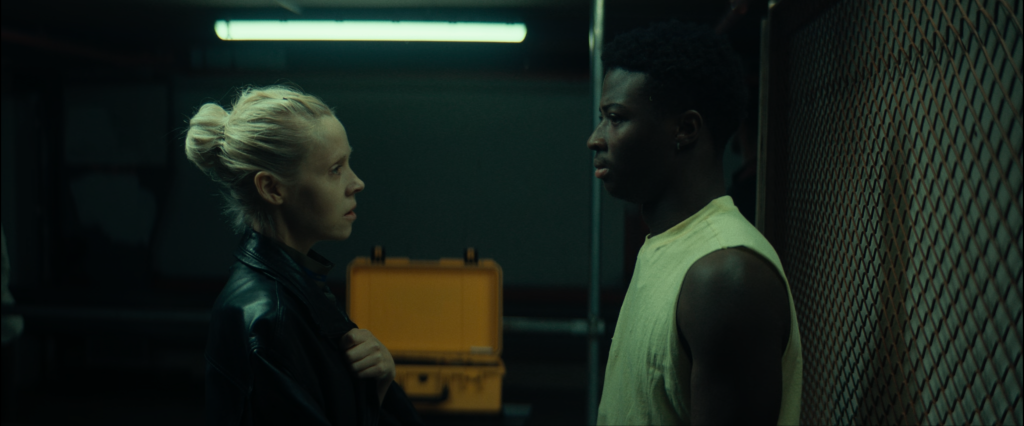
British Cinematographer (BC): Why did you decide to study cinematography? Please tell us a little bit about your filmmaking journey so far, as well as your influences and inspirations.
Edward Hamilton-Stubber (EHS): At school I struggled academically until I discovered politics in sixth form which was the only subject I excelled at. I really enjoyed trying to understand why people believed in certain ideologies and I found that there was a very empathic side to the discipline. It gave me a window into other people’s beliefs and motivations that I hadn’t experienced before.
After studying this abroad as an undergraduate and doing some work experience, I realised that it wasn’t really politics that I was interested in but people’s stories. I then moved to Berlin, as I knew it had a pretty big arts scene, and started to try and gain some experience there. I soon found myself in the camera department working as an AC and I quickly got the bug, becoming fascinated with everything the DP was doing. I started shooting and then managed to get on a student short film, which I then used to apply to the NFTS.
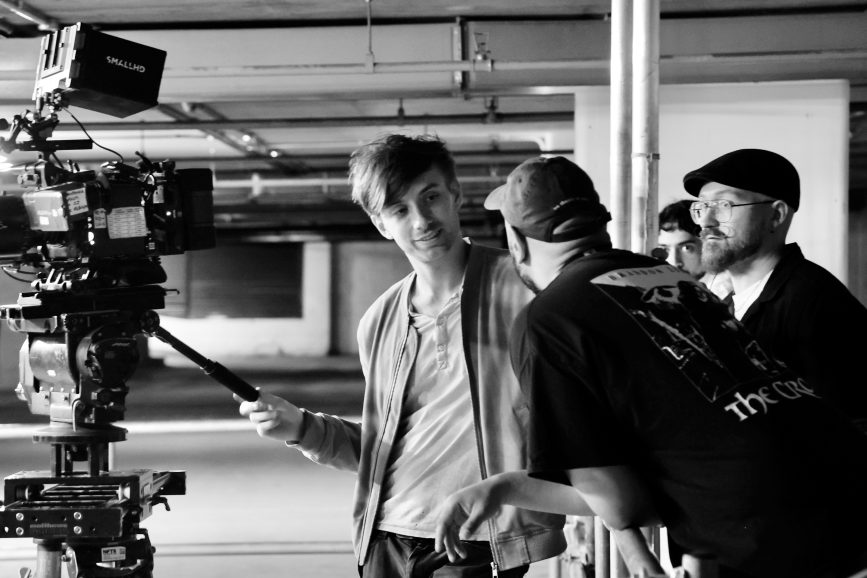
BC: What were your initial discussions with the director, Daniel Rands, about the visual approach for your film?
EHS: We both wanted to try to make the environment feel really oppressive and subterranean. There’s a class system that keeps all the characters in the film trapped in their ranks, and we wanted to feel that in the look. So, we opted for a lot of very dim top light with a heavy green bias. We also didn’t want it to feel manicured, so we tried to embrace the natural variation in green, yellow and blue tones that subterranean lighting can give.
We also felt like anamorphic would help to make the environment feel overwhelming and dominant around the films’ characters, and the slight distortion in the out-of-focus areas would give the world a kind of sickness that was prevalent in the underground gambling complex within which the film is set.
The consistent creep of the camera was also something we had discussed early on, to keep the tension and pressure rising in the various games that are played in the film.
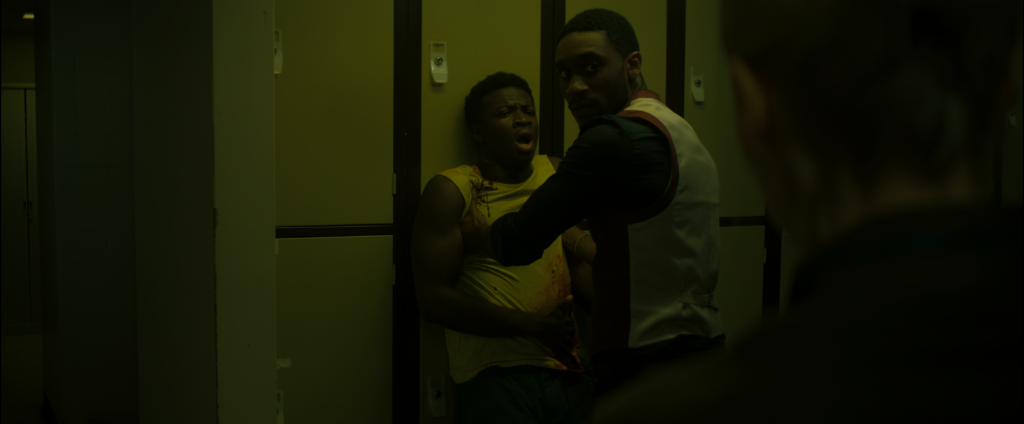
BC: What look and mood were you trying to achieve?
EHS: I think overall I just wanted it to feel dangerous. Worm is in a very precarious situation in the film and the stakes are raised throughout, so I felt that intensity should be felt in the image.
For me that translated into something that was dark and contrasty with vibrant greeny-yellow tones that are indicative of toxic material in the natural world.
BC: What were your creative references and inspirations for your film? Which films, still photography or paintings were you influenced by?
EHS: Personally, I drew on a lot of my memories and feelings from my time in Berlin. I spent four years there before coming to the NFTS and I was really inspired by all the subterranean and industrial spaces there. There’s a really aggressive and volatile energy to the nightlife and I found myself being drawn in and quickly losing myself to it. I feel like that guided me a lot throughout the process of making the film.
In terms of references, for colour we looked a lot at Fincher’s work and how he’s able to blend a green-yellow-cold palette that makes it feel like the world is festering with bad intentions and immorality. I also looked at how Greig Fraser ASC ACS was able to create an image in The Batman that was dominated by many different layers of shadows in such a tiny range of the waveform, that made everything feel very dark but without depriving you of the textures of the environment.
For camera movement and framing we watched a lot of films that had similar high-stakes life-or-death games like Intacto and 13 Tzameti. These were really useful in figuring out what coverage would help us build tension in the various games played in the film.
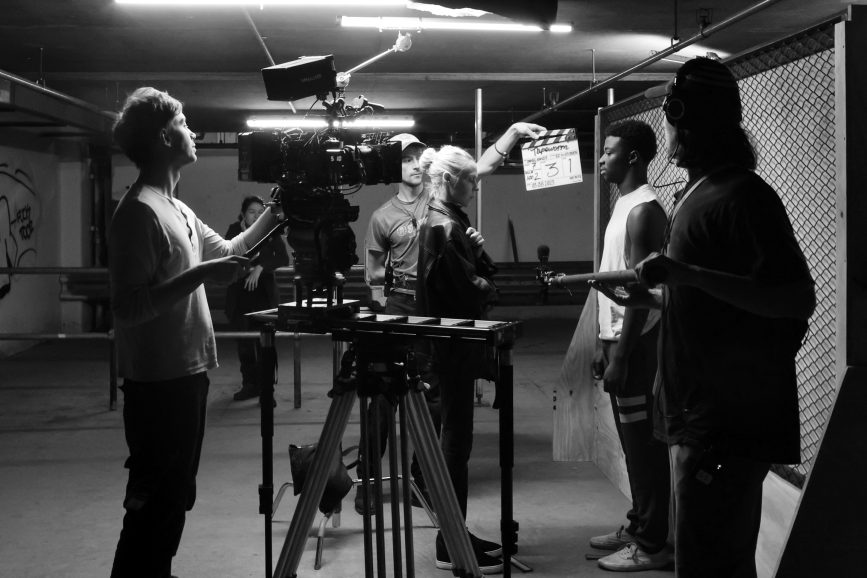
BC: What filming locations were used? Were any sets constructed?
EHS: Everything was done on location, with most of the film taking place in disused lower floors of a car park in central London, with half a day in a hotel lobby and a day and a half in an army barracks locker room. Lola Fleming (production designer) built the key game areas on site in the car park, which gave us a lot of control over the colour, texture and geography of some of the central scenes in the film.
BC: What camera and lenses did you choose and why? What made them suitable for this production and the look you were trying to achieve?
EHS: We knew we wanted to shoot anamorphic because we wanted the environment around Worm to feel distorted and unsafe. The place she works is run under a very twisted management that we never see and we wanted this to be felt in the scope around her.
There’s also a very competitive energy to focus breathing on anamorphic when pulling from one character to another, and I felt like this would be useful when covering people’s reactions to things that happen in the games that are played.
I tested some vintage anamorphics at Panavision, but found that they flared far too much with all the fluorescent and practical lights that we were going to have everywhere in the carpark. In addition, even though I’d planned to shoot the film at t2.8 ½ to t4, I knew there would be some situations where we would have to be wide open, and I really struggled with how soft the vintage glass was at wider stops. I also noticed a very different feeling across all the different focal lengths that I wasn’t sure would be helpful in scenes with lots of coverage during the games sequences. Eventually this led us to the Atlas Orions. They ended up being perfect for the film because they gave that anamorphic feeling but without compromising on the practicality I felt we needed. They are sharp, fast, lightweight, consistent across all focal ranges and don’t flare very much with best-in-class close focus capabilities.
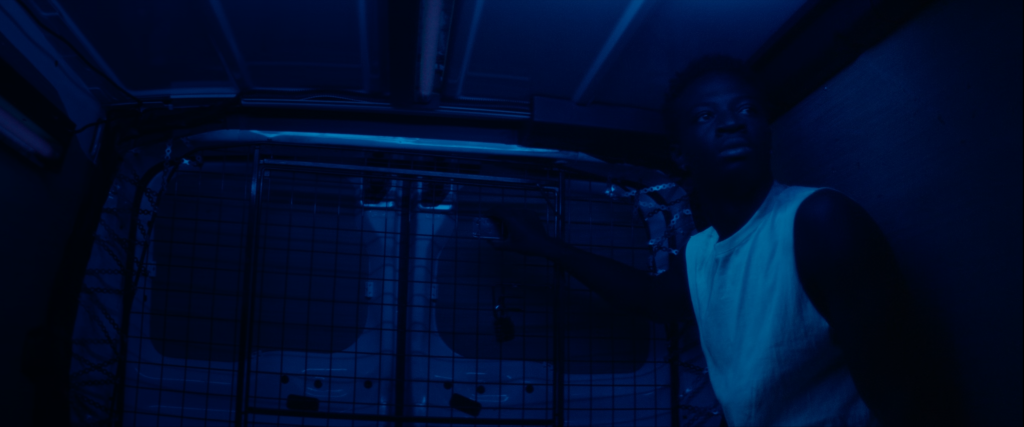
BC: What was your general approach to lighting?
EHS: I tried to always maintain this feeling of oppressive toplight above the actors at all times, to help reinforce the sense of hierarchy and oppression. In the brief moments where Worm was alone, I tried always to use a single source to show how alone she is in her struggle. In the car park we shaped and manipulated the practical lights that were already there, and turned off others to maintain contrast in the frame.
In the locker room I went for a more monochromatic look and used a single source above the talent and then flew in an eye light where I could. In the hotel lobby we kept all the lights on, this made the scene much brighter than the rest of the film, which made it feel like the kid character was emerging from the underworld into reality that was almost so bright you had to squint to bear it.
BC: What was the trickiest scene to light?
EHS: I found the final scene in the locker room really tricky. We shot that scene on the first day in the location, and when we were lighting the wide I really liked the way an old overhead yellow fluorescent light was interacting with an warmish LED we’d put overhead. It gave a really unique yellowy-green-warm feeling that felt very subterranean. But once we had to move on to the next setup I realised it was very hard to match the same tone that we had in the wide. In addition, it was a three handed scene, where the actors were all different heights, with a range of different skin tones, coupled with a few stunts, making it quite a challenge for us in such a small space. But it ended up being one of my favourite scenes in the film.
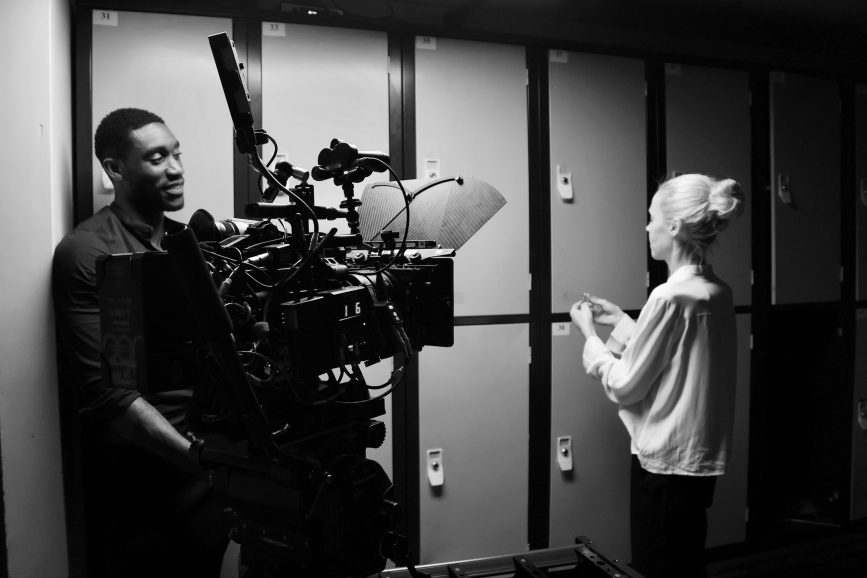
BC: Who did the grade and what look did you want to achieve?
EHS: Emmanuel Benjamin graded the film. Because of how much control we had underground we were pretty happy with how the rushes turned out, and we tried hard to pull as much colour contrast and shadow as we could out of the image. This meant pushing the yellow and green tones and drawing down some of the shadows to help separate things better.
I also noticed some variations in skin tone coming from some of the practicals in the car park which I hadn’t on the day, so we spent some time trying to bring those to a place that felt good.
BC: What is your proudest moment from the production process?
EHS: My proudest moment was probably when the kid character spontaneously shed a tear in the back of the van and we managed to catch it with an eye light. It wasn’t expected and really caught the watery surface of his eyes and ran with the tear as it rolled down his cheek. Can’t beat a juicy eye light!
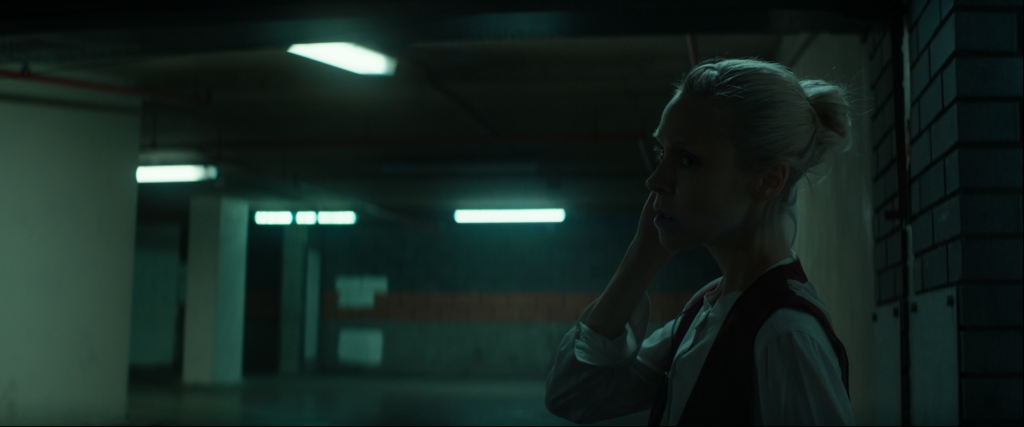
BC: What lessons did you learn from this production that you’ll take with you onto future productions?
EHS: I’m someone who struggles a lot when there are too many variables and options available, and I learnt that keeping your workflow for lighting on set as simple and consistent as possible is really helpful. It was my first time using an onboard monitor that was calibrated correctly and I lit almost everything by eye to it. I didn’t really use false colour or my light meter, and this meant that I was lighting with my heart and not numbers. I was nervous about it but the rushes for this film are probably the most consistent I’ve ever received.
BC: What would be your dream project as a cinematographer?
EHS: I think a dream of mine has always been to go on location somewhere really remote and extraordinary for a film or a show. Somewhere in the snow, sand, jungle or mountains. I love the buzz that comes from a crew that is discovering an environment together and allowing it to bleed into the language of a film. I think it brings you closer and inspires you more. I’m also terrified that LED volumes and AI are going to take over, so keen to see as much of real life as I can through the eyepiece before it’s deemed too expensive.
BC: Is there anyone not yet mentioned that you’d like to highlight?
EHS: I’d like to thank my gaffer, Mark Lane. He’s a real artist and internalised the language of the film almost instantly. Absolute legend!
Read the rest of our series spotlighting the NFTS’ 2024 cinematography cohort.







